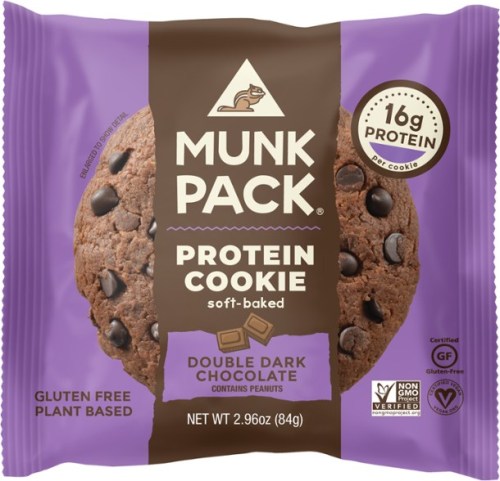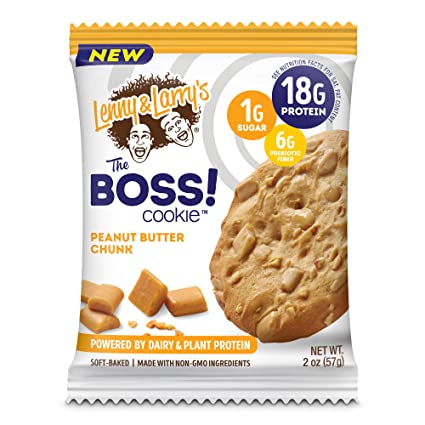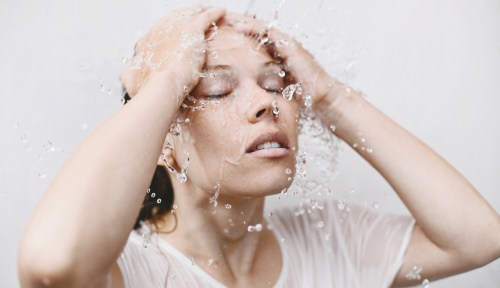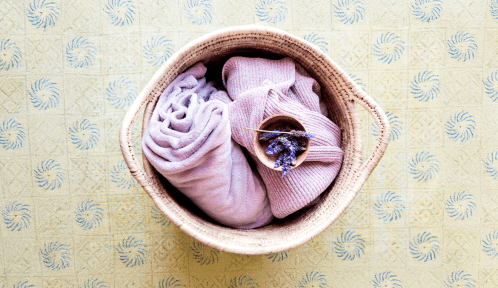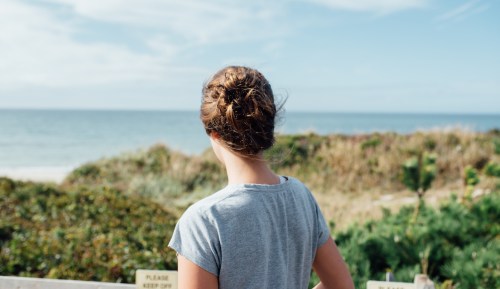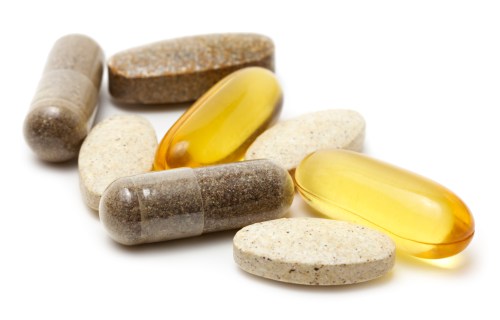Our editors independently select these products. Making a purchase through our links may earn Well+Good a commission
If you were a kid growing up in the ’90s, you probably remember Cookie Crisp. Almost as beloved as Reese’s Puffs, Cookie Crisp was a breakfast cereal made of mini chocolate chip cookies, which sugar-hungry kids poured into their bowls and drowned in milk.
Experts in This Article
registered dietitian
Even if you’re no longer eating your morning meal while watching an episode of Rugrats, there’s still something special about having cookies for breakfast. It’s a sweet way to start the day, literally and figuratively. But as adults, we also know the not-so sweet part about having cookies for breakfast: the sugar rush then inevitable crash (with no afternoon nap in sight), and not getting enough nutrients to be satisfied. In an effort to solve this conundrum, some food brands have introduced “healthy breakfast cookies,” with promises of high-protein in bold font on the packaging. Walk into most drugstores or supplement stores and you’ll find them right next to the protein bars.
According to registered dietitian Amy Schwarz, RD, a healthy breakfast cookie isn’t some mythical food that lives on the other side of the Lucky Charms rainbow; cookies can serve as an adequate breakfast—but only if they check off some important nutritional boxes.
What makes a breakfast cookie healthy
No matter what you’re having for breakfast—a bar, smoothie, hodgepodge of whatever you find in your pantry—Schwarz says for it to qualify as a “healthy breakfast” there should be a balance of carbs, protein, and healthy fats. Otherwise, you’re not going to get enough nutrients to nourish your body.
Protein needs vary from person to person based on age and activity level, but as a general rule, you should aim to consume 50 grams if you’re not very active, 75g if you’re moderately active, and 100g or more to put on muscle. It’s also important to know that the body can’t absorb more than 30 grams of protein at a time, so it’s crucial to spread your protein needs throughout the day—which includes your morning meal.
In terms of healthy fats, there’s no set requirement of how much to get a day, but omega-3 fatty acids, in particular, are crucial for brain health, and also provide the body with energy. Similar to how the type of fat in your breakfast cookie matter, so does the type of carb. Complex carbs are full of nutrients including fiber, magnesium, and vitamins B and C.
So how do you know if what you’re eying in the drugstore qualifies as a healthy breakfast cookie, meeting the protein, healthy fats, and carb balance Schwarz says are so important? Check out the nutritional panel and ingredients list. If the cookie is made primarily with white flour, that means the base is a simple carb, not a complex carb, and is less nutrient-dense and more likely to spike blood sugar levels. “A few examples of complex carbs are oats, almond flour, and whole wheat flour,” Schwarz says.
As for your protein and healthy fats, she says nuts, chia seeds, and nut butters are all good sources that are commonly used in healthy breakfast cookies. Some are also made with protein powder. Schwarz says that as a dietitian, she always prefers protein come from whole food sources, but being sourced from protein powder is still okay.
“It’s also important to check the added sugar content,” Schwarz says. A breakfast cookie could be high in protein and other nutrients, but if it’s a total sugar bomb, it will be stripped of its “healthy” breakfast cookie title. “There should be less than 10g of added sugar and less than 140 milligrams of sodium,” Schwarz says.
Healthy breakfast cookies you can buy
The cookies rounded up here all meet Schwarz’s guidelines of being balanced in complex carbs, protein, and healthy fats, while also being low in sugar and sodium.
Quest Soft & Chewy Cookie — $20.00
Munk Pack Protein Cookie, Double Dark Chocolate — $24.00
Lenny & Larry's The Boss Cookie, Peanut Butter Chunk — $20.00
Healthy breakfast cookie recipes
Making your own breakfast cookies allows you to have complete control over the ingredients, including the sugar content. Here are several healthy breakfast cookie recipes to try at home.
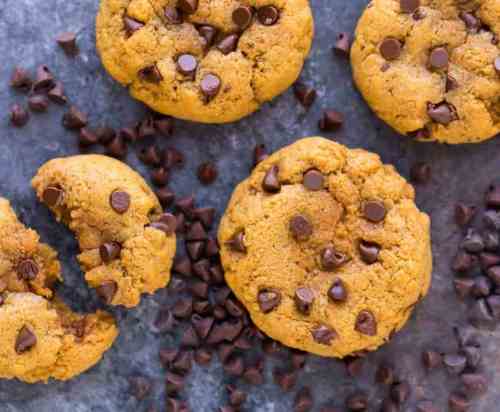
1. Chocolate Peanut Butter Cookies
Made with coconut flour instead of all-purpose flour, these are high in protein because they’re made with peanut butter, egg, and whey protein.
Get the recipe: Chocolate Peanut Butter Cookies
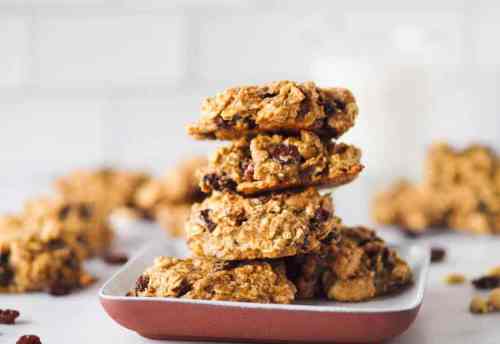
2. Oat Protein Cookies
Not into peanut butter? This recipe calls for vanilla protein powder and nuts of your choice for the protein instead, while oat flour provides the fiber and complex carbs.
Get the recipe: Oat Protein Cookies
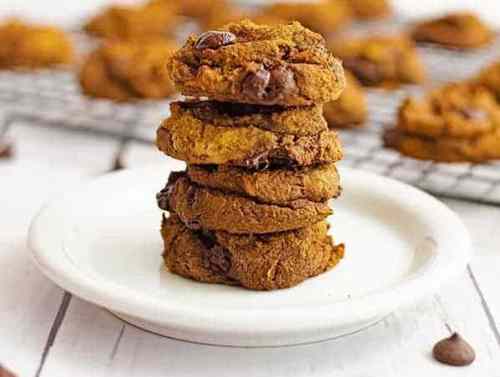
3. Chocolate Chip Protein Cookies
A lot of healthy breakfast cookie recipes call for eggs, but this one is 100-percent vegan. It uses butternut squash puree (a good source of fiber and complex carbs), tigernut flour, ground flax (both good sources of protein, healthy fats, and fiber), and vanilla protein powder. Besides the chocolate chips and vanilla protein powder, cinnamon and pumpkin spice give these cookies sweetness without using cane sugar.
Get the recipe: Chocolate Chip Protein Cookies
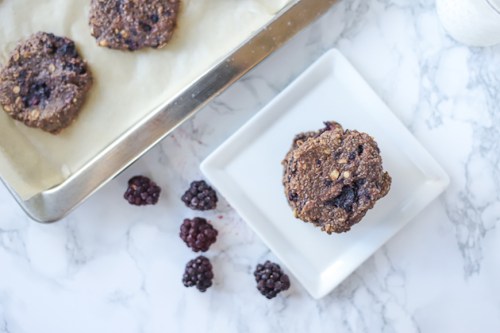
4. Blackberry Protein Cookies
Summer is prime blackberry season, and this recipe gives a delicious way to put them to use. Combined with chia seeds, almond butter, almond meal, and pea protein, there are nine grams of protein per serving.
Get the recipe: Blackberry Protein Cookies
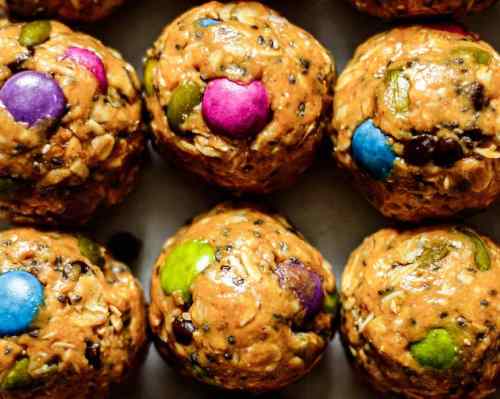
5. Monster Cookie Energy Bites
Rolled oats, chia seeds, pumpkin seeds…these cookie bites are chock full of fiber and healthy fats—and their gooey, chewy texture is downright irresistible. They’re also 100-percent gluten-free and vegan.
Get the recipe: Monster Sookie Energy Bites
As you can see, there are plenty of options for both buying healthy breakfast cookies or making your own at home. Just make sure yours checks off the nutrient boxes for protein, healthy fats, and carbs while staying low in sugar. With that in mind, go ahead and have cookies for breakfast. We’re all just big kids at heart.
Oh hi! You look like someone who loves free workouts, discounts for cult-fave wellness brands, and exclusive Well+Good content. Sign up for Well+, our online community of wellness insiders, and unlock your rewards instantly.
Sign Up for Our Daily Newsletter
Get all the latest in wellness, trends, food, fitness, beauty, and more delivered right to your inbox.
Got it, you've been added to our email list.


